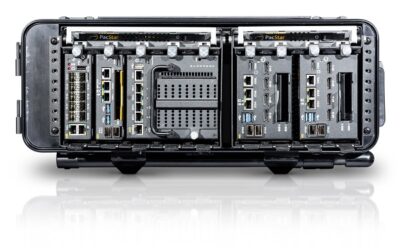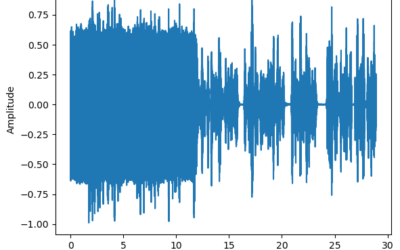Royal Australian Navy Progresses with Hunter Class Frigate
Australia’s newest surface ship programme, the Hunter class frigate, makes progress. At a cost of AU$35 billion (£19.175 billion; €21.55 billion), the new-construction programme calls for a ‘high-end’ frigate to replace ageing MEKO®200ANZ frigates of German origin. It forms the foundation of the Morrison Government’s AU$90 billion National Naval Shipbuilding Programme. The Royal Australian Navy (RAN) will get nine frigates, which are being constructed under the project SEA 5000 future frigate programme by BAE Systems Australia (a subsidiary of BAE Systems plc) and ASC Shipbuilding, formerly the shipbuilding division of ASC Pty Ltd., now a subsidiary of BAE Systems Australia. ASC Shipbuilding was acquired by BAE Systems from the Australian Government in 2018. ASC Shipbuilding also signed a contract with BlueScope Steel AIS, which will deliver more than 1,500 metric tonnes of steel plate used to construct five-ship blocks in the prototyping phase of the Hunter class frigate programme.
The prototyping phase itself is an essential phase when building a complex warship like the Hunter class frigate. The steel fabrication, block assembly hall and other facilities will be new so the prototyping will activate these and help train workers to use the state-of-the-art digital equipment at Osborne Naval Shipyard in South Australia, one of the world’s most advanced shipyards.
“It is an opportunity to test everything and mobilize the workforce,” Geoff Searle, Type 26 programme director at BAE Systems, told Naval Forces at Pacific 2019 in Sydney. This process is part of the Integrated Baseline Review that has set up the Hunter class programme structures, including the detailed integration schedule covering all aspects of the design and ‘productionisation’ phase that takes the shipbuilder up to the beginning of the manufacturing stage – including the supply chain engagement schedule.
Construction of the first-in-class is expected to get underway in 2022. The first unit, with a full load displacement of 9,700 tonnes, is expected to enter service with the RAN in the late 2020s.
The Hunter class frigate programme ranks among the largest surface ship projects in Australia’s defence history. Representing an evolution of BAE Systems’ Type 26 Global Combat Ship (T26 GCS), Australia’s latest warship class will fill a significant capability gap in the fleet, according to the RAN. The new-construction programme will benefit from technology transfer to ensure ‘lessons learnt’ from previous experience; technology, knowledge and processes will be transferred from the United Kingdom (UK) to Australia.
Featuring unique sonar capabilities based on Thales’ Sonar 2087 low-frequency active sonar (LFAS) consisting of both active and passive sonar arrays, the multi-mission frigate will be able to provide a robust anti-submarine warfare (ASW) capability anywhere on the world’s oceans, according to BAE Systems Australia. In addition to this, the ships will possess a “viable air defence capability against the spectrum of modern aircraft and missile threats,” said the RAN. The Mk41 anti-air defence fitment consists of both the Standard Missile 2 (SM-2) and ESSM (Evolved Sea Sparrow Missile) systems. The fitment offers the fleet an advanced at sea air defence system capable of engaging enemy aircraft and missiles at ranges in excess of 100km, adding to the capability of the Aegis-equipped Hobart class Air Warfare Destroyers (AWDs), three of which were introduced into service in 2017, 2018 and 2020. The Hunter class frigates will also possess two four-cell launch canisters for an advanced anti-ship missile system.
This air defence capability is also provided by the ultra-modern AESA radar from CEA Technologies, an Australian defence contractor that primarily supplies the RAN. The sensors need to be integrated into the combat system working with Saab Systems to interface with the American Aegis Combat System. Saab’s interface is built specifically for Australian requirements.
Geoff Searle said that the ship’s key design changes are in the combat systems and aviation areas.
“At the end of 2020, there will be a fully defined requirement for the Hunter class going forward,” he said and explained that these are not fundamental changes but second-order alterations.
“An example includes incorporation of the CEAFAR radar into the ship. We have got to make some decisions there about how the electrical systems and power distribution system will be designed to provide power to the radar and there are two or three options there,” Searle explained.
For ship self-defence, Raytheon provides its PHALANX close-in-weapon system (CIWS), with each ship receiving two systems. PHALANX acts as the last line of defence – the ‘last ditch,’ for which extreme precision, reliability and highest lethality are requirements of paramount importance. The Mk15 PHALANX is certainly the best-known example of this category of weapons and is in service with the US Navy (USN) and 24 allied nations, with over 900 units produced. It is compact, does not require deck penetration, provides a high rate of fire and its engagements are less expensive compared to most other solutions. In addition to this, the Hunter class frigate benefits from another highly sophisticated ship-self defence system, the mission-proven NULKA rocket-propelled, disposable, offboard, active decoy, an Australian designed and developed active missile decoy already in use on board USN, US Coast Guard and RAN ships. NULKA (a word of Australian Aboriginal origin for “be quick”) “seduces” anti-ship missiles away from their intended targets.
The ship’s integrated mission bay and hangar will be capable of supporting multiple helicopters like the RAN’s existing MH-60R ‘Romeo’ Seahawk, unmanned vehicles, boats (up to four 11-m rigid hull inflatable boats or RHIBs), mission loads (up to ten 20-ft containers) and disaster-relief stores, according to ASC Shipbuilding. The large flight will be capable of landing a Chinook helicopter to transport land forces.
In sum, the Hunter class will be the world’s first ‘bow-to-stern’ digitally-designed ASW warship. The modular digital design and open systems architecture will allow for through-life support and upgrades as new technology develops.
Naval Forces Issue V/2020 will feature an update of the project SEA 5000 future frigate programme.
Stefan Nitschke
























